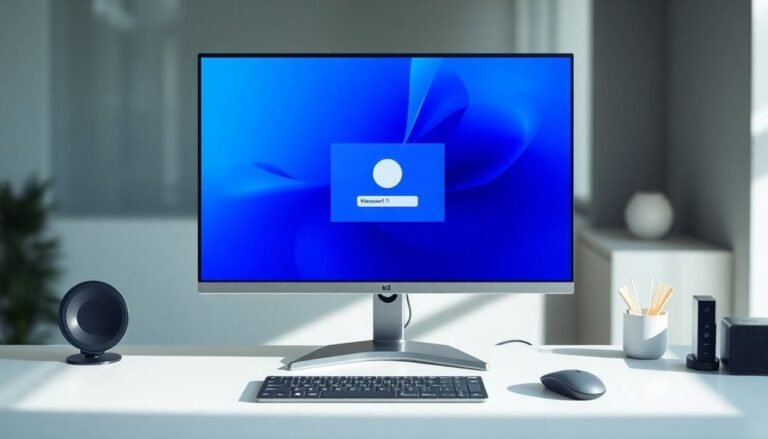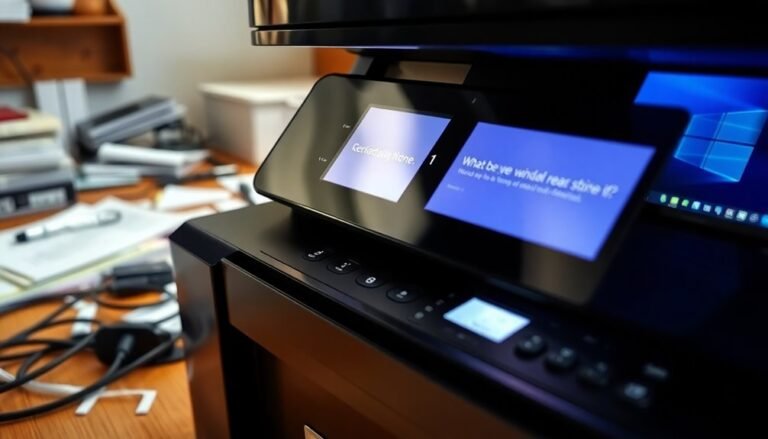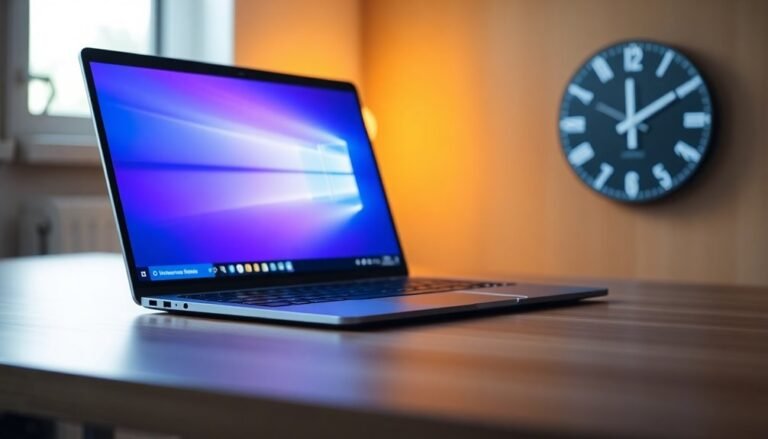Windows 11 Slow Keyboard Response: Fix Input Delay Problems
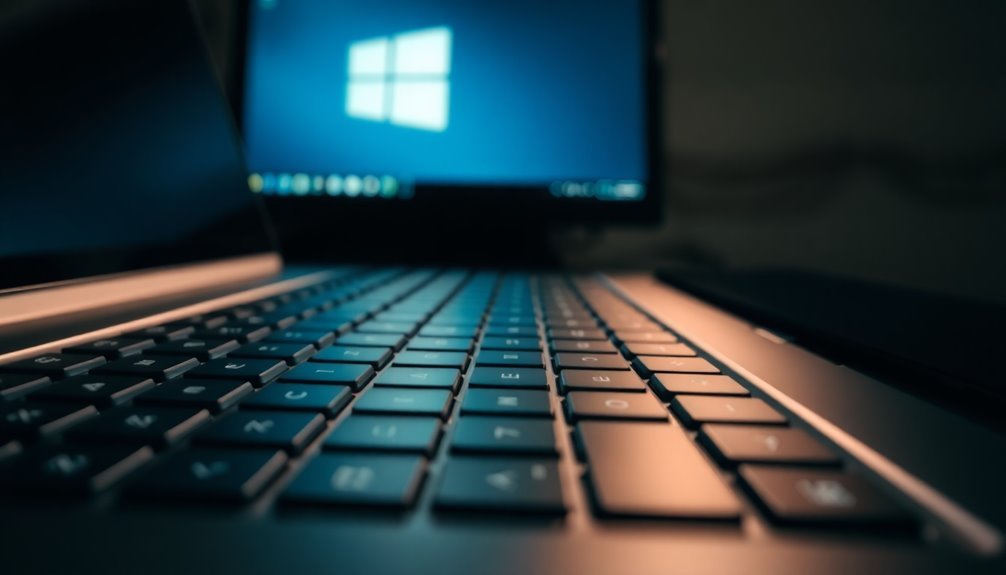
If your Windows 11 keyboard responds slowly, first check hardware connections or try a different USB port. Then, run the Keyboard troubleshooter in Settings > System > Troubleshoot.
Update or reinstall your keyboard drivers via Device Manager. Also, disable Filter Keys under Accessibility > Keyboard.
Use Task Manager to close resource-hogging apps. If using a wireless keyboard, update Bluetooth drivers.
You can tweak the registry keyboard delay and speed settings for better precision. Advanced repair and optimization tools may reveal further steps for a smooth typing experience.
Common Causes of Keyboard Input Lag in Windows 11

Common Causes of Keyboard Input Lag in Windows 11 and How to Fix Them
If you’re experiencing keyboard input lag in Windows 11, several factors could be causing this issue. One of the most common reasons is outdated or corrupt keyboard drivers. Even if Device Manager shows your keyboard as “working properly,” the drivers mightn’t be functioning optimally. To resolve this, update your keyboard drivers via Device Manager or download the latest versions from the manufacturer’s website. If the input lag continues, try reinstalling the drivers.
Another major cause of keyboard lag is high CPU or memory usage. To check this, open Task Manager and monitor your system resources. Terminate unnecessary background processes and perform a thorough malware scan to eliminate any malicious software that could be slowing down your keyboard input. Background processes consuming too many system resources can sometimes significantly increase input delay, so keeping your system optimized is important for smooth performance.
For users with wireless or Bluetooth keyboards, additional issues such as signal interference, outdated Bluetooth drivers, or aggressive power-saving settings can degrade typing responsiveness. Ensure your Bluetooth drivers are up to date, maintain close proximity between your keyboard and receiver, and consider switching to a wired keyboard temporarily to diagnose the problem.
Additionally, misconfigured keyboard settings can contribute to input lag. Features like Filter Keys or an incorrect keyboard repeat delay setting may cause sluggish response times. Review your Windows 11 accessibility and keyboard settings to confirm they’re optimized for smooth and responsive typing.
Checking Your Keyboard Hardware and Connections
How to Fix Keyboard Input Lag in Windows 11: Check Your Keyboard Hardware and Connections
Experiencing keyboard input lag in Windows 11? A thorough hardware inspection is essential to diagnose and fix the issue quickly. Start by examining your keyboard’s physical condition. Look for damaged USB connectors, frayed cables, or debris lodged under keys that may cause sticking or delayed responses.
If you’re using a wireless keyboard, ensure the batteries are fully charged and the receiver is securely connected within the recommended range.
To rule out hardware failure, test your keyboard on another PC. This simple step can confirm if the problem lies with your keyboard or your current computer’s settings.
Next, inspect your USB connections carefully. Plug your keyboard directly into a primary USB port on your PC, avoiding USB hubs or extension cables that can introduce lag. Test different USB ports, including both USB 2.0 and USB 3.0, to determine if input lag continues.
Also, check USB ports for dirt, dust, or physical damage that could affect connectivity. For wireless keyboards, minimize interference by moving other electronics away from the receiver.
If you suspect the issue is related to outdated keyboard drivers, updating them through Device Manager can help resolve input lag.
Follow this step-by-step checklist to resolve keyboard input lag on Windows 11:
- Inspect cables, connectors, and USB ports for any physical damage or dirt.
- Test the keyboard on a different device to confirm hardware functionality.
- Ensure wireless keyboard batteries are fully charged and receivers are properly connected without interference.
Running the Windows Keyboard Troubleshooter
How to Run the Windows Keyboard Troubleshooter to Fix Input Lag and Unresponsive Keys
If you’re experiencing keyboard input lag, unresponsive keys, or incorrect characters on your Windows PC, running the Windows Keyboard Troubleshooter can help you quickly identify and fix software-related issues.
Before starting, ensure your keyboard hardware and connections are working properly.
Steps to Run the Windows Keyboard Troubleshooter
- Open Settings on your Windows device.
- Go to System > Troubleshoot > Other troubleshooters.
- Find the Keyboard troubleshooter in the list.
- Click Run to start the automated diagnostic tool.
The Windows Keyboard Troubleshooter scans for common problems such as driver conflicts, misconfigured settings, filter keys enabled by mistake, and device recognition errors.
It can automatically apply fixes or guide you through manual steps if needed.
What to Do if the Keyboard Troubleshooter Is Missing
If you don’t see the Keyboard troubleshooter option, press Windows + R to open the Run dialog box.
Type `msdt.exe -id DeviceDiagnostic` and press Enter to launch the Hardware and Devices troubleshooter, which can also detect and resolve keyboard issues.
Why Use the Windows Keyboard Troubleshooter?
- Detects and repairs input lag caused by software problems.
- Fixes unresponsive or incorrectly mapped keys.
- Resets input services and disables conflicting settings like filter keys.
- Provides step-by-step instructions for manual troubleshooting.
- Requires administrative privileges to make system-level changes.
Additional Tips
- Keep your Windows OS updated to ensure all troubleshooters are available.
- If the troubleshooter can’t resolve your keyboard delay, try updating or reinstalling keyboard drivers manually.
- Consider external factors such as wireless interference or physical keyboard damage if software fixes don’t work.
Running the Windows Keyboard Troubleshooter is a fast and effective way to solve most software-related keyboard input delays and improve your typing experience on Windows 10 and Windows 11.
Updating and Managing Keyboard Drivers
How to Update and Manage Keyboard Drivers to Fix Input Delays in Windows 11
If you’re experiencing persistent keyboard input delays in Windows 11, outdated or misconfigured keyboard drivers might be the cause—even after running the Windows Keyboard Troubleshooter. To fix this issue, follow these steps to update and manage your keyboard drivers effectively:
- Open Device Manager by right-clicking the Start menu and selecting Device Manager.
- In Device Manager, expand the Keyboards section.
- Right-click your keyboard device and select Update driver.
- Choose Search automatically for updated driver software to let Windows find and install the latest drivers.
- Restart your PC to apply the changes.
If updating the driver doesn’t resolve the problem, try uninstalling and reinstalling the keyboard driver:
- In Device Manager, right-click your keyboard device and select Uninstall device.
- Reboot your computer—Windows will automatically reinstall the necessary keyboard drivers.
For extra assurance, regularly check Windows Update and trusted third-party tools like Driver Easy for keyboard driver updates.
Best Practices for Managing Keyboard Drivers in Windows 11:
- Regularly check Device Manager and Windows Update to ensure your keyboard drivers are up to date.
- Avoid downloading drivers from unverified or suspicious websites to prevent security risks.
- After updating or reinstalling drivers, monitor keyboard responsiveness to detect any remaining input delays or issues.
Disabling Filter Keys and Other Accessibility Features
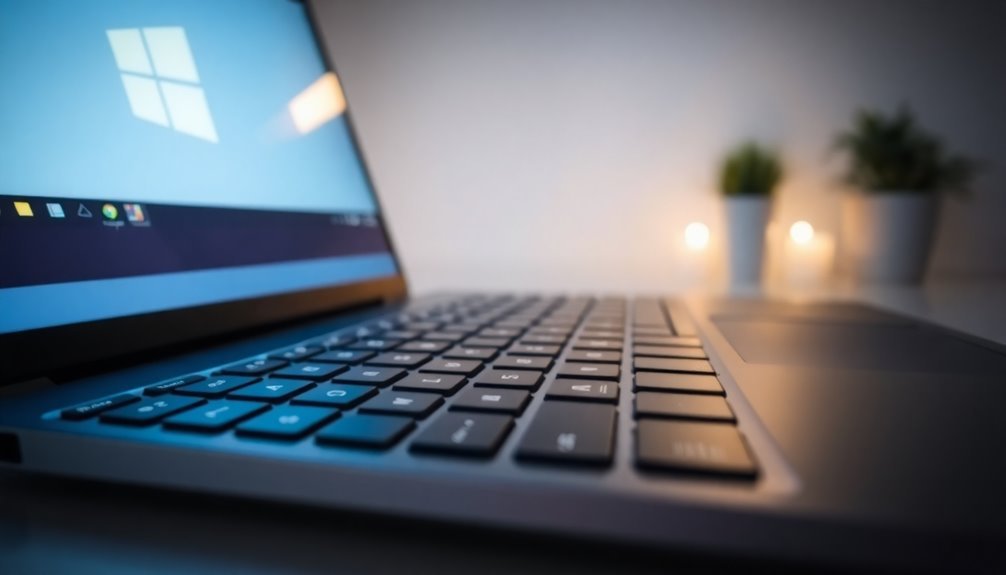
How to Disable Filter Keys and Improve Keyboard Responsiveness in Windows 11
If you’re experiencing keyboard input delays or slow typing responsiveness in Windows 11, disabling Filter Keys and other accessibility features can provide an immediate fix.
Filter Keys is an accessibility option designed to assist users with motor impairments by ignoring brief or repeated keystrokes. However, when enabled unintentionally, it often causes noticeable input lag and missed key presses.
To disable Filter Keys in Windows 11, follow these simple steps:
- Press Windows + I to open the Settings app.
- Go to Accessibility > Keyboard.
- Locate the Filter Keys toggle and switch it off.
This change takes effect instantly and usually resolves slow keyboard response issues without a system restart.
In addition to Filter Keys, it’s important to check other related accessibility features such as Sticky Keys and Toggle Keys in the same Keyboard settings menu.
Misconfigured settings here can also impact typing speed or cause unexpected delays. After disabling these features, test your keyboard for improved responsiveness.
By turning off Filter Keys, Sticky Keys, and Toggle Keys, you can often fix keyboard lag problems quickly and enhance your overall typing experience in Windows 11.
Always review all keyboard-related accessibility toggles before troubleshooting hardware or driver issues. This ensures that accessibility settings aren’t unintentionally affecting your keyboard performance.
Keywords: disable Filter Keys Windows 11, fix keyboard input delay, improve typing responsiveness, Windows 11 keyboard lag, accessibility features keyboard Windows 11
Optimizing System Resources and Background Processes
How to Fix Keyboard Input Delay in Windows 11 by Optimizing System Resources and Managing Background Processes
If you’re experiencing keyboard input delay in Windows 11, optimizing your system resources and controlling background processes can significantly improve performance. Follow these expert tips to fix keyboard lag and enhance your PC’s responsiveness.
Step 1: Identify and End Resource-Heavy Processes
Open Task Manager by pressing Ctrl + Shift + Esc. In the Processes tab, sort running programs by CPU and memory usage to spot resource-hungry applications. Right-click on non-essential processes and select “End task” to free up system resources and reduce keyboard input delay.
Step 2: Manage Startup Programs to Speed Up Boot and Performance
Navigate to the “Startup” tab in Task Manager. Disable unnecessary startup programs that slow down boot time and consume resources in the background. This simple step helps reduce system load and keyboard lag.
Step 3: Restrict Background Apps in Windows 11 Settings
Go to Settings > Privacy & security > Background apps. Here, limit which apps can run in the background to prevent them from competing for CPU and memory, improving overall system responsiveness.
Step 4: Adjust Visual Effects for Better Performance
Optimize Windows 11 performance by disabling visual effects:
- Access System > Advanced system settings > Performance Settings, then select “Adjust for best performance” to turn off animations, shadows, and other eye candy that consume resources.
- Switch to the “High Performance” power plan under Control Panel > Power Options to maximize CPU performance.
Step 5: Remove OEM Bloatware to Free Up Resources
Uninstall pre-installed OEM apps via Settings > Apps & Features. Removing unnecessary bloatware frees up CPU and memory, helping to eliminate keyboard input delay.
By following these steps to optimize system resources and manage background processes, you can effectively fix keyboard input delay in Windows 11 and enjoy a smoother, more responsive typing experience.
Keywords: fix keyboard input delay Windows 11, optimize system resources Windows 11, manage background processes Windows 11, improve keyboard lag, Windows 11 performance tips
Fixing Lag With Bluetooth and Wireless Keyboards
How to Fix Bluetooth and Wireless Keyboard Lag in Windows 11: A Step-by-Step Guide
If you’re experiencing input lag with your Bluetooth or wireless keyboard on Windows 11, follow these effective troubleshooting tips to improve responsiveness and eliminate delays.
1. Check Keyboard Range and Interference
Ensure your keyboard is within the optimal range of the Bluetooth receiver. Remove any physical obstructions or sources of wireless interference that might disrupt the connection.
2. Reconnect Your Keyboard
Disconnect and then reconnect your Bluetooth or wireless keyboard to reset the connection and resolve temporary glitches.
3. Test Bluetooth Receiver and Dongle
Confirm your computer’s built-in Bluetooth receiver is working correctly. For better stability, try using an external Bluetooth dongle.
4. Replace or Recharge Batteries
Low battery power often causes lag in wireless keyboards. Replace or recharge your keyboard batteries to maintain consistent performance.
5. Update Drivers and Firmware
Use Windows Device Manager or visit your keyboard manufacturer’s website to download and install the latest Bluetooth and keyboard drivers.
Also, check for keyboard firmware updates to enhance compatibility and responsiveness.
6. Adjust Power Management Settings****
Disable USB selective suspend and Bluetooth power-saving features in Device Manager to prevent automatic power down of your devices.
Set your Windows 11 power plan to High Performance to prioritize device responsiveness.
7. Run Bluetooth Troubleshooter
Use the built-in Bluetooth Troubleshooter in Windows 11 to automatically detect and fix system-level Bluetooth issues affecting your keyboard.
8. Disable Accessibility Features
Turn off Filter Keys and other accessibility options that might add input delay, ensuring your keyboard inputs register promptly.
By following these proven methods, you can effectively fix Bluetooth and wireless keyboard lag on Windows 11, enhancing your typing experience and overall productivity.
For more Windows 11 keyboard tips and troubleshooting guides, bookmark our site and stay updated!
Addressing Keyboard Lag After Windows Updates
How to Fix Keyboard Lag After Windows 11 Updates Like KB5058411
Many Windows 11 users experience keyboard lag immediately after installing recent updates such as the cumulative KB5058411. This keyboard input lag affects both built-in and external keyboards, causing delays in typing and gaming.
Fortunately, this issue is usually related to software settings or drivers rather than hardware problems.
To fix keyboard lag after Windows 11 updates, follow these proven steps:
1. Disable Filter Keys in Windows 11
Sometimes Windows updates enable accessibility features like Filter Keys, which introduce input delays. To turn off Filter Keys, go to Settings > Accessibility > Keyboard and toggle off Filter Keys.
2. Update or Reinstall Keyboard Drivers via Device Manager
Windows updates can cause driver compatibility issues leading to lag. Open Device Manager, locate your keyboard under the “Keyboards” section, then right-click and choose Update driver. If problems persist, select Uninstall device, restart your PC, and let Windows reinstall the driver automatically.
3. Check System Resource Usage and Manage Startup Programs
New background processes installed by updates may consume CPU or memory, slowing down keyboard responsiveness. Open Task Manager and review running processes for high resource usage. Disable unnecessary startup programs and background apps to improve performance.
By following these targeted solutions, you can quickly resolve keyboard lag issues in Windows 11 after recent updates and restore smooth typing and gaming performance.
For more Windows 11 troubleshooting tips, stay updated with the latest guides and fixes.
Advanced Fixes: System File Repair and Registry Tweaks

Advanced Fixes for Keyboard Lag on Windows 11: System File Repair and Registry Tweaks
If you’re experiencing persistent keyboard lag or input delays on Windows 11, especially after recent updates, advanced troubleshooting techniques like system file repair and registry tweaks can help restore optimal performance.
Start by running the System File Checker tool: open an elevated Command Prompt and type `sfc /scannow` to scan and repair corrupted or missing system files that may be causing keyboard lag.
If the problem continues, use the Deployment Imaging Service and Management Tool (DISM) with the command `DISM /Online /Cleanup-Image /RestoreHealth` to repair the Windows image and fix deeper system issues affecting input responsiveness.
Both SFC and DISM require administrative privileges and usually prompt a system restart to complete repairs.
When system file fixes don’t resolve keyboard lag, consider editing the Windows Registry. Launch `regedit` and navigate to `HKEY_CURRENT_USERControl PanelKeyboard`.
Here, adjust the `KeyboardDelay` and `KeyboardSpeed` values to improve keyboard response time. Always back up your registry before making changes to prevent system instability.
After modifying these settings, log out or restart your PC to apply the changes.
By following these advanced Windows 11 keyboard lag fixes—combining system file repairs and precise registry tweaks—you can effectively address stubborn input delay issues that standard troubleshooting or driver updates might miss.
Restore smooth and responsive keyboard performance with these expert solutions today.
Frequently Asked Questions
Can Third-Party Antivirus Software Cause Keyboard Input Lag on Windows 11?
Yes, third-party antivirus software can cause keyboard input lag on Windows 11. You should perform a clean boot, disable antivirus, and test keyboard response. If lag disappears, update or replace your antivirus to restore normal performance.
Does Using Keyboard Macros or Remapping Tools Affect Input Response Time?
Imagine debugging with a slide rule—using keyboard macros or remapping tools can introduce input lag. You’ll want to choose optimized software, avoid overlapping keyboard hooks, and disable resource-heavy services to troubleshoot and minimize any added delay.
Will a Factory Reset of Windows 11 Fix Persistent Keyboard Lag Issues?
A factory reset can fix persistent keyboard lag if software corruption or conflicting settings are to blame. Before resetting, update drivers, run SFC, and check settings. If lag persists post-reset, you’re likely facing hardware or peripheral issues.
How Does Keyboard Input Lag Affect Gaming Performance in Windows 11?
Input lag in gaming feels like playing underwater—you press a key, but your character lags behind. You’ll lose precious milliseconds, so update drivers, close background apps, and use wired keyboards to restore lightning-fast gameplay.
Are Certain Keyboard Brands More Compatible With Windows 11 Than Others?
Yes, you’ll find Microsoft Surface keyboards deliver the best Windows 11 compatibility, thanks to dedicated drivers and native integration. If you use Apple or generic brands, check for driver support and update firmware to prevent input issues.
Conclusion
By following these troubleshooting steps, you’ll nip keyboard lag in the bud and restore smooth input on your Windows 11 device. Start by checking hardware, then work through software fixes—from drivers to system settings. Don’t overlook system resource optimization and potential issues from recent updates. If problems persist, advanced fixes like system file repair or registry tweaks can get you back on track. Stay proactive, and you’ll keep your typing experience fast and frustration-free.
